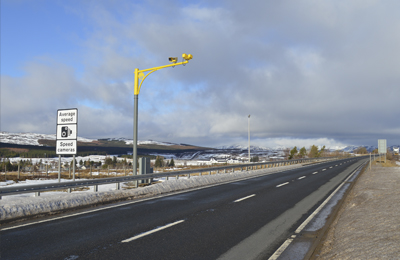Speed Enforcement
The Enforcement Strategy for the route is now firmly established and involves a combination of average speed cameras (ASC) introduced in late 2014 between Dunblane and Inverness and mobile enforcement north of Inverness. The principal purpose of the enforcement strategy is to encourage compliance with the speed limit rather than detecting large numbers of offenders. The research carried out by the A9 Safety Group highlighted that on average over 36% of drivers were exceeding the speed limit on the A9. From an overall perspective Police Scotland continues to patrol the route using both marked and unmarked vehicles to monitor driver behaviour.

Dunblane to Perth
This entire stretch is covered by average speed cameras.
Perth to Inverness
Between Perth and Inverness ASC monitor the single carriageway sections (including the 2+1 stretches) while the dual carriageway sections have a number of mobile sites which are enforced by the North Safety Camera Unit. ASC are also the principal speed enforcement method used within the long term roadworks associated with the upgrading programme.
Inverness to Thurso
The North Safety Camera Unit has a number of mobile camera sites between Inverness and Thurso which are monitored on a regular basis.
The Scottish Safety Camera Programme was restructured in 2015, forming three enforcement units (North, East and West) responsible for speed and red light cameras across Scotland. The Safety Camera Units work alongside Police Scotland and are funded through a Scottish Government grant administered by Transport Scotland. More information on safety cameras can be found at: Scottish Safety Cameras can be found at: Scottish Safety Cameras







